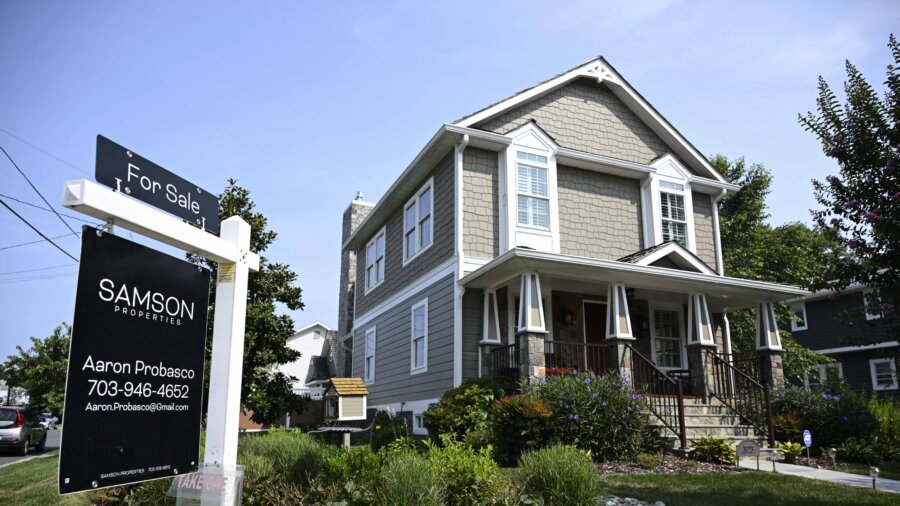The average age of U.S. homebuyers has risen to an all-time high, as the median home down payments nearly match annual U.S. household incomes, according to a yearly survey of the National Association of Realtors (NAR).
The NAR’s 2024 Profile of Home Buyers and Sellers survey, tracking transactions between July 2023 and June 2024, found that the average age of U.S. homebuyers rose from 49 to a record 56 in just one year.
The median age of first-time buyers also went up—to 38 from 35 last year, up by 7 years over a decade, while their numbers dropped by 8 percent; first-time buyers now make up just 24 percent of the market—the lowest level since NAR began tracking this data in 1981.
The typical repeat buyer age increased to 61 years from 58, while the average home seller age also rose to a record-high 63 this year.
“The U.S. housing market is split into two groups: first-time buyers struggling to enter the market and current homeowners buying with cash,” said Jessica Lautz, NAR deputy chief economist and vice president of research, in a statement.
“First-time buyers face high home prices, high mortgage interest rates and limited inventory, making them a decade older with significantly higher incomes than previous generations of buyers,” said Lautz. “Meanwhile, current homeowners can more easily make housing trades using built-up housing equity for cash purchases or large down payments on dream homes.”
With median home prices hovering around $435,000 during the survey’s timeframe, a typical down payment of 18 percent brings the up-front cost of an average home to $78,300, close to the annual U.S. median household income of $80,610, according to data from the U.S. Census Bureau.
The bulk of homebuyers remain married couples, accounting for 62 percent of recent buyers, up by three percent from last year, which then marked the lowest share of married couples since 2010.
Twenty percent of home buyers were single females, 8 percent single males, and 6 percent unmarried couples.
Buyers are driven not only by the desire to own a home but also by changes in family structure, employment, and lifestyle needs. A significant number of older Americans are purchasing new or smaller homes, possibly reflecting retirement planning.
Families Housing Together
The number of people buying a multigenerational home also markedly rose from 14 to 17 percent of market share.
“Cost savings are a major factor, with young adults returning home—or never leaving—due to prohibitive rental and home prices,” Lautz said.
The second most cited reason to invest in multigenerational homes next to cost savings (36 percent) was take care of aging parents (25 percent). 21 percent of sales were motivated by children moving back home, while on in five decided that the children would not be able to afford moving out for the foreseeable future.
As a consequence, households with children of age make up 73 percent of recent buyers, the largest share they’ve ever been.
Location remains a crucial factor for buyers, with the most cited criteria being neighborhood quality, proximity to friends and family, and region-specific affordability.
Interestingly, buyers have shifted closer to their prior residences, moving an average of 20 miles from their previous home, compared to 50 miles reported in 2022.
Finally, the report gives good grades to real estate agents, with 88 percent of buyers and 87 percent of sellers saying they’d recommend their agent to a friend. Eighty-one percent of sellers chose to stick with the first agent they interviewed, with 68 percent ending up “very satisfied” and 22 percent “somewhat satisfied” with the resulting sale.

